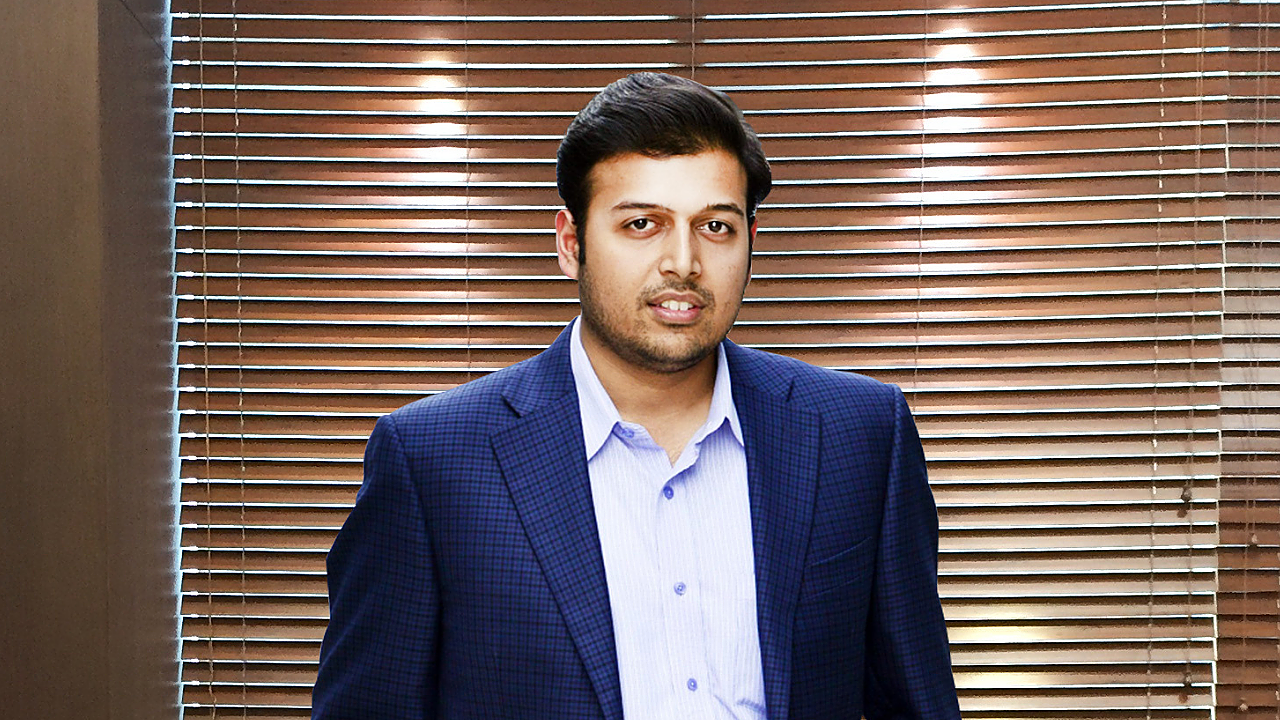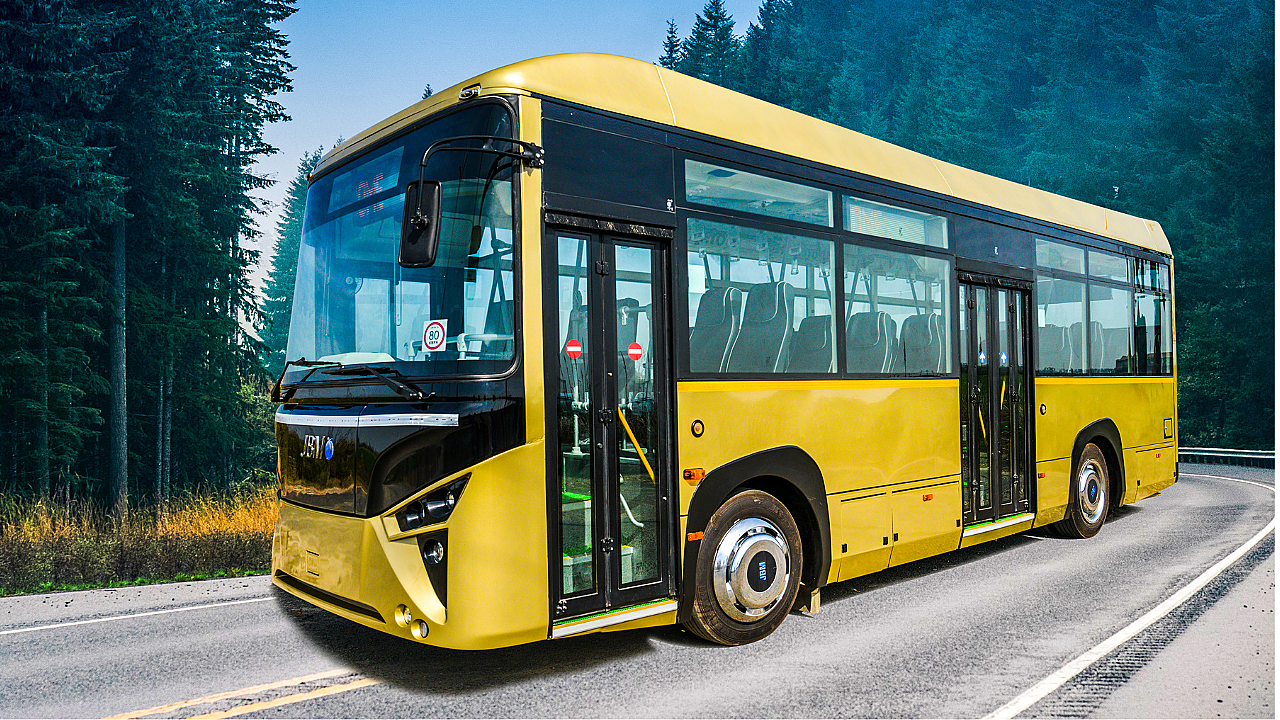
Nishant Arya is the Vice Chairman of JBM Group. He has been instrumental in transforming the group since 2010 and diversified the business from auto components & systems to various sectors. He has been actively looking at R&D, Engineering, Diversification, International Business and new projects. He played a key role in planning various technical collaborations and joint ventures with renowned foreign companies including buyouts.
What is your outlook for the next five years?
Commercial vehicles (CVs) are the time check for the country that shows how the economy is moving. Personally speaking, I think we have hit a low, which has taught us many things. COVID should not be wasted; we should all learn a lot from how health, environment and digitalisation are important, and these learnings will not go away; they will stay with us for life. It has changed the perspective of different companies, professionals, organisations and the government. I think this will help and accelerate the focus on all these three areas.
In India and worldwide, everybody is now adopting SDGs – sustainable development goals. We see multiple zero-emission technologies coming. PLI will play a vital role in boosting the industry. The automotive industry and manufacturing sector are the country's growth engine for employment and many allied sectors and service sectors. So that needs to be very well understood and taken up.
I think we as a country definitely have had our challenges, but we have responded exceptionally well compared to many other countries.
What kind of opportunities do you have to increase the content per vehicle in CVs?
We have now started focusing in a big way on getting into whitespaces and doing complete line building for CVs. Earlier, we were involved in making components. As we are huge in tooling and fixtures, we are also engaged in line building. So, we do complete line building for OEMs in-house for their entire cabin/vehicle assembly, among other such things.
This was the white space, which was handled by OEMs themselves or working with global players. These were not done in India. We have brought this to India, and have given our customers a very high level of localisation. Secondly, we are also involved in a complete truck cabin – something we weren’t doing earlier.

What are the path-breaking innovations that are in the offing?
We have done much work in the area of light-weighting. We use multiple materials, and we are going for laser welding in TWB – tailor-welded blank technology. We hold the largest market share in this area. We started with the passenger vehicles, and now we have expanded quite a bit in CVs in multiple applications to reduce vehicle weight.
We have deployed state-of-the-art Artificial Intelligence and Machine Learning solutions focussing on a few aspects – ensuring workforce performance & efficiency, and eliminating errors. This will help us make anything first time and every time right.
The focus is on enhancing the productivity of the machines through monitoring systems, while also optimising cost. The machine uptime is higher as the system allows devices to perform based on the requirements. Generating real-time data lead to data analytics, eventually enabling us to move from regular proactive maintenance to predictive maintenance.
Would it help you in remote diagnostics?
Yes, it enables us to offer remote diagnostics and remote location solutions and to support this, we have developed our own algorithms and software.
In addition, we have gone for facial recognition. Our employees are being identified in the facilities by different customers through facial recognition. It helps to identify those delivering higher productivity, so that reward and recognition are done. It helps us identify the gems in the system and award them, reward them and engage them.
Have these systems helped JBM to mitigate challenges posed by the pandemic that restricted travel?
Absolutely; we have also used this to check for maintaining social distancing, following safety protocol and attentiveness of the people on the shop floor.
Do you offer these kinds of solutions to passenger car OEMs and two-wheelers?
We offer this to OEMs of CVs, PVs and auto components manufacturers. In addition, we are also going ahead with providing some automation solutions. We have a robust process on 4Ms – Man, Method, Material and Machines. We offer low-cost automation solutions, ensuring 100% accuracy of 4Ms.
What kind of benefits do the vehicle manufacturers accrue?
I think they can optimise their manpower effectively in terms of man-hours. Secondly, they can do track and trace, which helps in optimising quality and managing warranty costs. We also look at integrating men and machines to increase productivity, making one person manage multiple machines and their maintenance, eventually optimising overall cost.
Do you see this improving the Takt time?
It will increase the Overall Equipment Efficiency (OEE). As a result, our customers reduced their man-hours by 5-10% and reduced maintenance costs. Besides, it improves machine-to-machine working. For example, if a particular machine is not functioning optimally, the efficiency of the entire line will be maintained accordingly. In this case, we enable the machine with the lowest productivity to reach the highest level.
Coming to JBM's components division, do you see any pain points to be addressed in catering to the customers?
Today, the one big challenge that all of us are dealing with is inventory because of the unpredictability of COVID. Therefore, one has to be very prudent with the inventory and finance. Also, because of the variability of the volumes, the fixed cost gets impacted, and consequently, it is necessary to convert the majority of the fixed costs to variable costs to reduce the impact.
The other big challenge today is rising raw material prices. Therefore, it is necessary to optimise raw material usage.
We are currently producing CNG cylinders for commercial vehicles, designed and engineered by us. Currently, we focus on mobile applications as well.
Can you update on JBM's Mobility 2.0 initiative?
In Mobility 2.0, we are focusing on offering comfort, safety and affordability. We define that through JBM ACES, where ACES stand for Artificial intelligence and machine learning, Comfort, Electric and Safe. And in some instances, we also say that C is for CNG.
We have come out as the leading player, especially in e-buses. As an EV ecosystem player, delivering end-to-end solutions, our focus is on the technology of vehicle, battery and charging. Every electric bus saves about 350,000 litres of diesel and about 1,000 tonne of CO2.
Today, the percentage of gas in the whole energy mix is 6%, and now the government is targeting to take it to 15%, which will be 200-250% growth. Automotive will be the biggest driver, especially CVs, as they run 500-1,000 km per day.
How are you preparing to leverage those kinds of projections?
We have already committed to entering the Compressed Biogas (CBG) market, where we will be going from generation to consumption. So, combined with our CNG offering is our gas ecosystem, as well as the electrification ecosystem.

Can you tell us the feedback that you have received from your customers for your e-buses?
The feedback has been good. There's a difference between need and choice. While diesel bus is the need, the electric bus is a choice as it is noise and pollution-free, besides offering comfort. The customers look at the total cost of ownership (TCO). For example, the mileage of a 12-metre bus in Delhi is about 2.4 to 2.5 kmpl, which translates into about INR 40 per km. In the case of CNG, it is between INR 25-30 per km, and in electric, it is a maximum of 1.4 kilowatt-hours per kilometre. With the government’s subsidy, the running cost is around INR 8 per km. Besides, maintenance is more competitive.
How many JBM e-buses are running now? What are the challenges?
We have about 700 buses. The government has taken one very good step by extending the FAME II policy up to March 2024, which gives a good roadmap. There are five challenges to be addressed:
- Funding for EVs should be given as priority lending by banks;
- Skill development – there should be a specific programme to see how industry, academia and the government can get connected;
- Incentivise to invest in technology – why only ‘Make In India’, the brains should also be from India not just hands and legs alone;
- Declaring some key places as zero-emission or green zones as these places are deteriorating because of pollution;
- Focus on awareness.
What are your plans on the charging infrastructure?
We commit to clock one billion e-kilometres and reduce one billion kg of CO2 in four to five years. At present, we have more than 200 DC fast-charging stations.
What about exports and your overseas operations?
We have more than 15 plants in 10 countries, excluding India. We export to over 25 countries in addition to our presence in 10 countries. Therefore, we have our presence in 35 countries. We have a workforce of close to 2,500 people outside India.